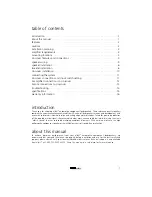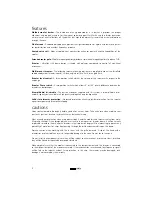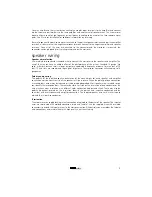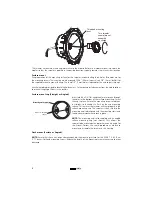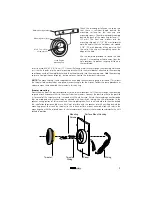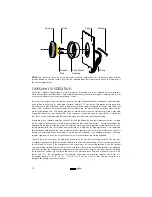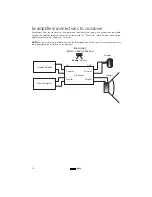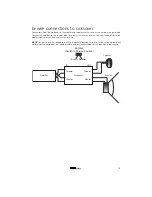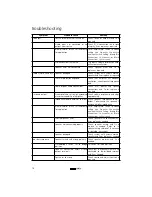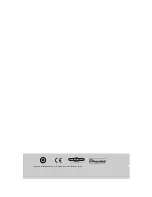
You may also Bi-wire the system by connecting the woofer input terminals to the amplifier and connect
ing the tweeter input terminals to the same amplifier with another set of speaker wires. This is sometimes
done to allow a specific high frequency or low frequency cabling to be used for the two separate signal
paths. See
Crossover Installation
for additional information on bi-wiring.
Be sure to connect the positive crossover terminals to the positive speaker terminals and positive amplifier
terminals, also ensure that the negative crossover terminals connect to the negative amplifier and speaker
terminals. Once all of the wires are attached to the connector and the crossover is mounted, the
connector can be plugged into its mating receptacle on the crossover.
speaker wiring
Speaker wire selection
Use insulated two-conductor stranded wire to connect the crossover to the speakers and amplifier. The
size of the wire can have an audible effect of the performance of the system. Stranded 18 gauge "zip
cord" will work, but can result in lower output or unpredictable frequency response. For wire runs of 50
feet (15 m) or less, we recommend 16 gauge or larger wire. The crossover connector will accept up to 14
gauge wire.
Polarity and phasing
The polarity of the positive/negative orientation of the connections for every speaker and amplifier
connection must be consistent so all the speakers will be in phase. When the polarity of one connection
is reversed, bass output may be reduced or stereo imaging degraded. Most speaker wire is marked so you
can identify the two conductors. There may be ribs or a stripe on the insulation of one conductor, or the
wire may have clear insulation with different color conductors (copper and silver). There may also be
polarity indications printed on the insulation. Identify the positive and negative conductors and be
consistent with every speaker and amplifier connection. The supplied speaker wire has a white stripe to
indicate the (+) positive conductor.
Termination
The woofer uses an angled locking screw connection integrated to the basket of the speaker. The tweeter
wires are terminated with molded connectors (male and female). Use the supplied wire with insulated
connectors to extend the tweeter wires to the crossover section. Alternatively you may solder the tweeter
wire connections and insulate them with high quality heat shrink tubing.
5


